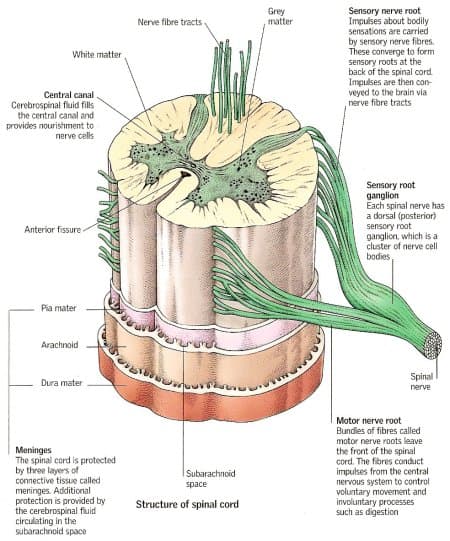C.I.S.P.
Chronic immune sensory neuropathy
Search Cidpusa webChronic Sensory CIDP can present with a sensory Ataxia due to involvement of Dorsal Root Ganglion (DRG) or sensory Nerves. Selective inflammation of the sensory nerve root proximal to the DRG can cause a sensory ataxia.
😏cidpusa.orgNEUROMUSCULAR JUNCTION - where a NERVE FIBER and muscle fiber come together. A.K.A. Myoneural junction. MOTOR NEURON ENDINGS - nerve fiber caries the impulse that stimulates the muscle fibers
MOTOR END PLATE - specialized part of muscle fiber membrane (sarcolemma) located at the neuromuscular junction, has many folds
SYNAPTIC CLEFT - An actual "gap" or cleft which exits between the motor neuron endings and the motor end plate.
SYNAPTIC VESICLES - numerous vesicles in motor neuron endings, where neurotransmitters are stored before being released into the synaptic cleft.
NEUROTRANSMITTER - substance that is released from nerve endings into synaptic cleft.
Stimulates an impulse. In this case, a "muscle impulse". One of the major neurotransmitters is ACETYLCHOLINE.
This brings about muscle contractions. CHOLINESTERASE is an enzyme that breaks down acetylcholine
Spinal Roots

18 patients with CISP who had normal nerve conduction velocity but having the sensory symptoms have been reported. Somato Sensory Evoked Responses (SSEP ) have been abnormal in these patients. All such patients have gait ataxia . Sensory nerve root inflammation is confirmed either by nerve root inflammation seen on MRI or SSEP. Most patients have large fiber involvement, they have sensory loss to touch and paresthesias with frequent falls. The disease course is chronic and progressive. Sural sensory nerve action potential will be preserved. Some patients will have enlargement of lumbar nerve roots. The CSF protein is usually elevated. All patients respond to IVIg. This disorder has been called Chronic Immune sensory polyneuropathy or CISP.
The condition effects LARGE MYELINATED FIBERS OF THE POSTERIOR
ROOTS this is a form of CIDP.
On examination reflexes are generally reduced in lower extremity and can be normal. In advanced cases reflexes are lost in
arms and legs.
NCV are in the range of 40 m/s and DL is 4-3 m/s.
In these patients , the main complaints were sensory they had frequent falls and the EMG/NCV were normal. However their CSF protein was elevated in the spinal fluid.
This condition has been called CISP. The patients with gait abnormalities were diagnosed as Hysterical and responded to immune treatments. The author describes large fiber involvement.
Large Fiber can be tested by checking Joint position and vibration.
Small Fiber is tested by checking pin prick.
Please continue to page-2😏